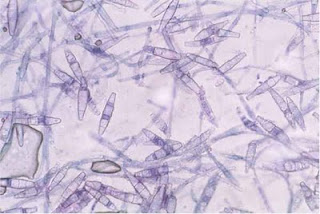Why You Should Spay or Neuter Your Cat
Cat overpopulation is a very serious problem in the United States. There are simply too many cats and not enough people to care for them. Responsibility is the key to cat ownership, and a major part of that responsibility is guaranteeing that your cat doesn’t reproduce.
Neutering and spaying are two of the most commonly performed elective procedures. Not only do they help curtail cat overpopulation, they also bring many health and behavior benefits to both you and your cat.
Spaying:
Spaying is the procedure used for females. The ovaries and uterus are removed, and the cat can usually go home the same day. There are several advantages to spaying such as; no more heat cycles, no more crying, yowling, or trying to escape outside, no more unwelcome visits by unneutered male cats, no uterine infections, no ovarian cysts, and greatly reduced incidence of mammary tumors if spayed before the first heat.
Neutering:
Neutering/castration is the procedure used for males. The testicles are removed, and the cat can go home the same day. Advantages of neutering are; a reduced urge to roam, the mating drive is stopped, urine spraying will stop (or not begin), a lower incidence of prostate problems, and less aggression (which reduces the likelihood of cat-fight abscesses).
Myths Vs. Fact Regarding Spaying and Neutering:
Many cat owners are concerned that spaying or neutering their cat will result in undesirable changes in their behavior. One concern is that the cat will become fat and lazy. The truth is that most cats get fat and lazy because they are fed too much and they don’t get enough exercise. After spaying or neutering, you should monitor your cat’s appetite and activity patterns, and adjust the diet accordingly.
Some people feel that neutering their male cat will result in him feeling like less of a male. It’s understandable to feel this way, however, cats don’t have any concept of sexual identity or ego and they don’t suffer any kind of emotional reaction or identity crisis when neutered.
A popular misconception is that it is better for a female cat to have one litter before spaying. Medical evidence, however, shows the opposite to be true. Dogs that are spayed before their first heat rarely, if ever, develop mammary tumors. The same holds true for cats. This is important, as feline mammary tumors are much more malignant than those seen in dogs and they carry a worse prognosis.
Dogs and cats are not being deprived of parenthood by being spayed. Unlike people, dogs and cats do not experience a sense of fulfillment by giving birth or by the mothering process.
Some people want to breed their cat because they are hoping that the kittens will be exactly like the mother. This is a misconception. Breeding two purebred animals rarely results in offspring that are exactly like one of the parents, and with mixed breeds, it is virtually impossible to have offspring that are exactly like one of the parents. The idea that a cat should have a litter so that children can witness the miracle of birth is troubling. There are countless books and videos available to teach children about birth in a responsible manner. Letting a cat produce offspring that the family has no intention of keeping is teaching children irresponsibility. Those of us who have seen animals euthanized in shelters due to lack good homes know the truth behind this dangerous myth. In fact, as former employees of The ASPCA, we at Manhattan Cat Specialists believe that the most important reason to have your cat spayed or neutered is to prevent the birth of unwanted kittens. More than 12 million dogs and cats are euthanized in shelters each year. Approximately 75% of all cats entering shelters are euthanized. Yes, you may be able to find homes for all of the kittens in your cat’s litter, but each home you find means one less home available for cats at shelters and humane organizations that need good homes. If any or all of your cat’s offspring were also to have his or her own litter, you’ll be adding even more animals to the population. Having your cat neutered or spayed is a sign of responsible pet ownership. You can rest assured that you've done the right thing once you have your cat sterilized.


